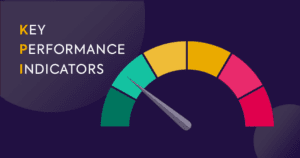 Breweries, restaurants, retail shops, and other small businesses need accessible and reliable ways to monitor their business performance. Specifically, they need to know if their business decisions are moving them toward their goals.
Breweries, restaurants, retail shops, and other small businesses need accessible and reliable ways to monitor their business performance. Specifically, they need to know if their business decisions are moving them toward their goals.
There are myriad ways to measure the performance of a business, but for small businesses like brewpubs and craft distilleries, owners and management don’t need to be bogged down with too many numbers.
Here is Lord CPAs’ list of top KPIs for craft brewers, wineries, restaurants, brewpubs, and other craft-related businesses. One thing to note, these KPIs should be measured on a rolling 12-month basis, but you can use whatever timeframe suits your business needs.
#1 – Net Profit %
Net Profit % is by far the most important KPI for any business that has plans to grow. This KPI is very well known, and most businesses likely already use it. It’s simply net profit divided by revenue. Revenue can be net of discounts or before discounts so long as you are consistent with the calculation. We prefer to use revenue net of discounts for all numbers involving revenue since net revenue is what the business earned.
This KPI is important because it is a measure of overall profitability. If you recall from our prior post about 10% net profit is the new breakeven, you can see that this KPI is the number one KPI to track for the overall performance of your business.
#2 – Labor Efficiency Ratio
Labor Efficiency Ratio (LER) is a lesser-known KPI, but it’s important because it measures how much gross profit is generated for every dollar of labor spent. This KPI is calculated by dividing gross profit dollars by total labor dollars.
This KPI directly impacts profitability because it determines how much gross profit is produced to cover labor and overhead. And since labor is one of the most controllable expenses in any business, this KPI holds a top spot in our list of KPIs.
#3 – Return on Invested Capital
Rounding out our top 3 KPIs is Return on Invested Capital. This is a similar KPI to return on investment but takes a deeper look at the different types of capital in a business. At its core, this measures how well your capital supports your growth.
This KPI has a more complicated calculation but is as follows:
- Net Profit Dollars divided by Total Invested Capital Dollars
Total Invested Capital Dollars is defined as total dollars from the following three categories of business capital:
- Buffer Capital – This is the total cash on hand, less outstanding balance on your business line of credit or credit cards.
- Operating Capital – Essentially all non-cash current assets, less non-line of credit current liabilities. But you can use inventory and accounts receivables, less accounts payable, and unearned revenue (i.e., gift cards outstanding) as an easy way to get to this number.
- Infrastructure Capital – This is longer-term assets like fixed assets and equipment, less any debt that supports these assets. Say you buy $1 million in equipment and take out $750,000 in debt to finance it; your Infrastructure Capital would be $250,000. This number will increase as debt is paid off since we use the asset at its original cost, not less depreciation.
When you total these three categories, you end up with Total Invested Capital, and when you divide Net Profit by Total Invested Capital, you get Return on Invested Capital. This KPI is a bit more complicated and usually used by businesses that see 10% or more net profit, but it’s still good to practice tracking it if you aren’t at that stage.
Honorable Mentions
The above KPIs can be used by any business, any size, at any time. But there are other KPIs out there that may be useful to your business. It’s good to have an advisor who can help you discover and define these KPIs to augment the above KPIs.
Most KPIs that go beyond the above will likely be industry-specific and usually around monitoring the cost of goods sold. For example, food cost percentage is a KPI in restaurants and other food establishments that helps keep a pulse on menu profitability. For brewers, it might be the ingredient cost per barrel of beer. Retail businesses might see revenue per square foot since the cost of goods sold is usually defined at the wholesale level. Maximizing revenue is the only growth option instead of optimizing costs like a restaurant or brewer might.
Now that you have a list of important KPIs, go out and use them! And get in touch with Lord CPAs if you need help implementing these KPIs or want advice on improving them.
